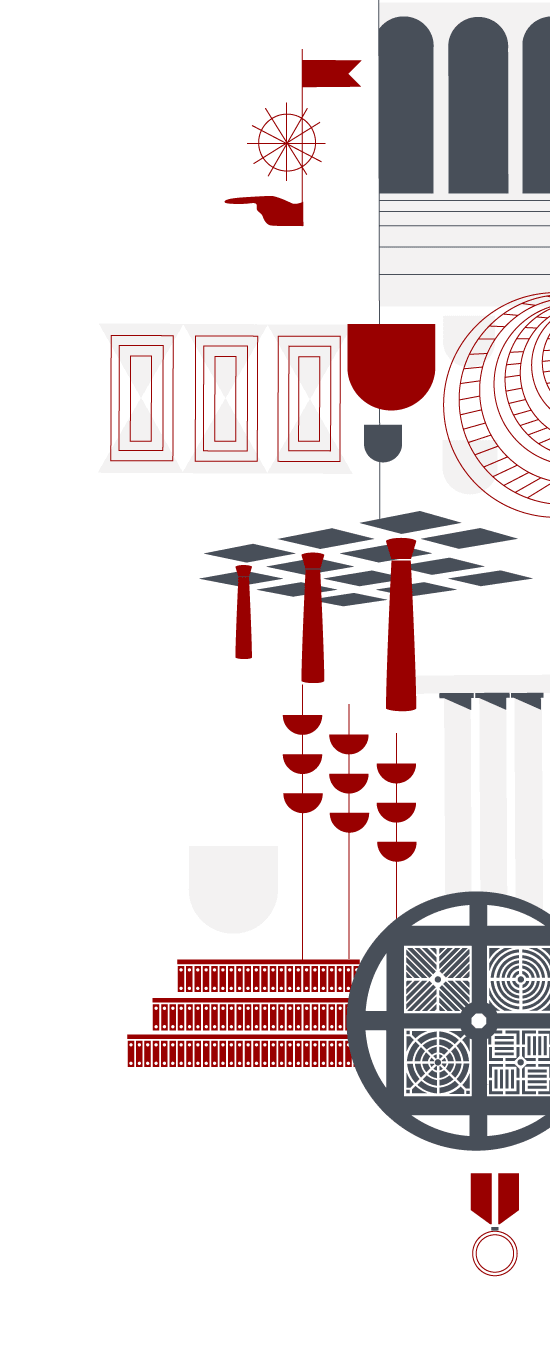
Palazzo Liviano and Hall of the Giants
Rector for a decade (1932-1943), Carlo Anti gave a decisive impetus to development of the real estate occupied by the University. In particular, a competition for the design of a new building for the Faculty of Letters was won, in 1934, by the architect Gio Ponti. As in the case of Palazzo Bo, the Milanese architect personally designed many of the furnishings for Palazzo Liviano, including benches, desks, podia and coat stands.
With construction work on Palazzo Liviano completed, a competition was announced for frescoed decoration of its entrance hall. The selected theme was that of continuity between Roman and modern culture. The winner was Massimo Campigli, who executed the work during 1939 and 1940. It represents archaeology as the source of Italian culture, a heritage shared by both academics and the populace.
Placed in the entrance hall of Palazzo Liviano is a statue of Livy (Titus Livius) by Arturo Martini (1942), shown bent forward and engrossed in study. In the words of the sculptor: “A child kneeling and writing for an entire lifetime”.
Since 1937, the third floor of the building has housed the Museum of Archaeological Sciences and Art.
The Sala dei Giganti originally belonged to the Palazzo dei Carraresi (from the name of the da Carrara family which governed Padova in the 14th century). This great hall was named from the size of the figures – personages of Ancient Rome – depicted in the frescoes. The original cycle, now lost, was inspired by Petrarch at the invitation of Francesco I da Carrara, whose guest he had been, on the basis of his De viris illustribus, recounting the lives of illustrious men in the history of Rome. The first decoration of the hall, completed a few years after Petrarch’s death (1374), is attributed to either Altichiero da Zevio or Jacopo Avanzi. Among the personages portrayed was Petrarch himself, posthumously: his portrait is the only one of the older cycle which has survived. The hall was completely renovated in the 16th century. A new cycle of frescoes was completed around 1540, by Domenico Campagnola and his collaborators, in which the theme of two centuries earlier was taken up again, with changes to some of the subjects depicted. The Sala dei Giganti housed the University Library from 1631 to 1912. The frescoes were restored to their original splendour during recent works, completed in 2008.
Palazzo Liviano
piazza Capitaniato, 7 - 35139 Padova
Guided tours to the Hall of the Giants (Sala dei Giganti) at Palazzo Liviano


